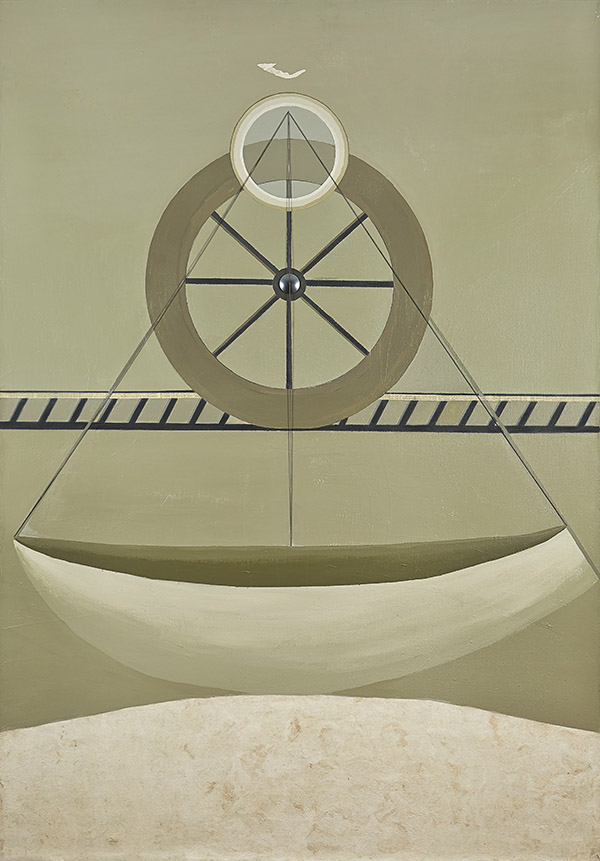Gladys Triana: A Path to Enlightenment 1971–2021
University of Saint Joseph and Fairfield University Art Museum • West Hartford, CT and Fairfield, CT • usj.edu and fairfield.edu • Through December 17, 2022

In 1984, Gladys Triana ripped up charcoal, pastel, and tempera drawings, many based on portraits of her Cuban-born family—a diaspora living in three countries at that time. In this physical and psychically ritualized act, she demarcated her practice: “I looked at them and said: this is not the work. The work is what I’m going to make of them.” Featuring an unsettling visage, the large-scale collage Homage to Munch (The Scream) is made from those drawings and is on view in Gladys Triana: A Path to Enlightenment 1971–2021. In the catalog, Adriana Herrera Téllez writes that Homage to Munch “establishes a paradigm for Triana’s aesthetic ruptures: it is the beginning of a long series of works, and it is a cry of expressive freedom….”
Throughout this two-venue survey, we see Triana’s “aesthetic ruptures” at play as she adds diverse media to her paintings—lace, stock market indexes clipped from the The New York Times, wooden dowels—and explores installation, sculpture, photography, and video. Named Beyond Exile at Fairfield and From the Female to the Intimate at Hartford, each venue distinctly frames her work, yet both include pieces from every era of Triana’s career and attend intersectionally to the Cuban-born, New York City-based artist’s life experiences; the influence of her studies in philosophy; the incorporation of feminism, especially relating to the body; and her spirituality.
This writer found Triana’s paintings and installations from the 1990s to be the strongest; however, her entire oeuvre is striking for its risk taking, its unexpected and elegant materiality, and in the paintings, its confident brushwork and refined sense of color. Two works that exude these qualities are The Path of Memory (1995), which addresses immigration, time, and exile; and the painting Nautical Rose (1998), a brilliant minimalist redux of Cuba’s iconic “Virgin of Charity” image. It is key to visit A Path to Enlightenment in person if one is to fully comprehend Triana’s subtle, yet dynamic, color palette, attention to surface, and voluminous scope and scale. Experienced in the galleries, the individual works become more than the sum of their parts—they become what we make of them.
—Terri C Smith
